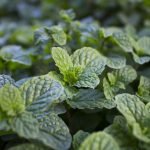Jillian Stansbury, ND
Over the many millennia of humanity’s evolution, the average life expectancy has increased substantially, from well under 30 years in Paleolithic times to about a world average of 67 years at present. There are striking differences in the average life expectancy in various countries, with Japan and other Asian countries on the high end at around 80 years and the impoverished war-stricken countries such as Swaziland on the low end at not much better than the Paleolithic 30-year life expectancy. At 37th, the United States is nowhere near the top, with a life expectancy of 78.5 years, and public health officials report that the US life expectancy has declined for the past several decades.1 At present, we cannot expect to surpass the age of our parents,2 as have many generations over the last millennia. This may be blamed in part on the soaring diabetes and obesity epidemic in the United States, along with stress and a toxic environment.
Aging is inevitable, but in a culture that values youth and may disrespect its elders, it is not surprising that the field of antiaging medicine is burgeoning. The offerings range from surgical approaches that cosmetically mask the outward effects of aging to the widespread use of hormonal therapies for men and women alike, with claims that they will maintain muscle mass, reduce bone loss, and prevent vaginal atrophy and skin wrinkling. Alternative medicine is not immune to youth worship, ranging from Chinese emperors’ seizing all the best Ganoderma lucida (Reishi) and Panax ginseng roots to the more modern options such as dehydroepiandrosterone, intravenous therapies, and Ayurvedic panchakarma spas.
Both logic and research show that longevity is greatly impaired by extended oxidative stress and inflammatory processes in the body. For example, diabetes is associated with a decreased life span and an increased risk of death from cardiovascular and renal disease, complications of obesity, and other disorders. One will now encounter the term inflammaging, so noted are the deleterious effects of inflammation on the life span. Damaged by oxidative and other cellular stresses, mitochondrial DNA loses its structure and functions. Halting inflammaging has been the bread and butter of much of herbal and naturopathic medicine at present, with efficacy in treating and reversing chronic disease.
Factors Affecting Longevity
A recent epidemiological study conducted in Iowa revealed that longevity was associated with never having smoked and with having a positive attitude, certain genetic factors such as parental longevity, and a healthy body mass index at age 50 years; there were no surprises here. Women tend to live longer than men for reasons not entirely clear,3 and married or coupled people tend to have better health and live longer than solitary people.4 I have often suspected that couples have both someone to vent to and relieve stress, as well as someone to nag them about any bad habits (eg, “How many of those doughnuts are you going to eat?” or “You’ve been sitting on the couch all morning. Get up and come for a walk with me!”). For women, being earliest in the familial birth order is associated with greater longevity, but being the firstborn male has shown no such benefit.
Lifestyle and Longevity
Although it is unlikely to ever be widely embraced as a lifestyle or therapy, long-term caloric restriction is associated with an increased life span, as long as caloric restriction is not associated with malnutrition. Researchers suggest that decreased food intake reduces oxidative stress in the body and helps preserve mitochondrial function and protect the DNA.5 What are we to do with that information, other than fasting and going hungry? Perhaps eating as lightly and nutritiously as possible (eg, avoiding evening snacking and delaying breakfast until midmorning or even noon) may be a way to reap some benefits and yet still derive the sensual pleasure of food. Many people might happily choose enjoyment of food over another year or 2 of life without the culinary pleasures of the table.
Sleep also has a role in longevity. Curiously, both too little sleep and too much sleep are associated with a decreased life span. Results of animal studies suggest that the amount of learning and new connections formed in the brain in any given period of wakefulness contributes to the quantity of sleep needed afterward. Researchers hypothesize that lack of restorative sleep following extensive brain activity is damaging, but so too is learning nothing new and not forging any new neural connections at all and then indulging in long and unneeded sleep. The research in humans is limited but suggests that older individuals should be given every opportunity to have novel experiences and continue to challenge themselves mentally every day of their lives.6 Similarly, moderate to vigorous physical activities are associated with longevity, while a sedentary lifestyle or excessively vigorous physicality without rest in our middle years is associated with somewhat shortened life spans.7
Life Spans in Various Species
Not to be too existential, but why must we die at all? If the body has the basic ability to renew and recycle itself for at least a century, why cannot cells continue replicating for much longer given good nutrition and a healthy vital force? For example, a Pinus longaeva (bristlecone pine tree) in California, nicknamed Methuselah, is thought to be 5000 years old and the oldest known living tree, with some botanists speculating it to be more or less immortal. Some jellyfish are said to be immortal because they can periodically revert back to a juvenile state and begin life afresh. Other than these jellyfish, black coral species are said to be the longest-lived animal on the planet, with some specimens dated to well over 4000 years old and many marine animals such as mussels, geoducks, and giant tortoises routinely reaching 175 to 200 years or more. The bowhead whale is said to be the longest-lived mammal, with some confirmed to be over 200 years old. The oldest documented human was Jeanne Louise Calment, who died in 1997 at age 122 years.
Why can some species repair, renew, and regenerate for millennia, while others are limited to a mere century, or in the case of some insects, a fleeting rotation of the earth? Inflammaging, poverty, stress, malnutrition, and lack of new learning help explain why some people are robbed of their potential century but not why it is so rare for humans to exceed this. What is it that caps our life spans? In a word, it is telomeres.
Telomeres and the Hayflick Limit
Telomeres are a region of nucleotides occurring on the ends of chromosomes in eukaryotic cells that have a role in both protection and replication of genetic material. Each time a chromosome undergoes replication, a bit of the telomere is used in the process; as a result, the telomeres become shorter and shorter over time. Without telomeres, the most distal regions of chromosomes are lost during replication, such that genetic material is whittled away with each successive replication until so little is left that cell division ceases, a phenomenon referred to as the Hayflick limit, after researcher Leonard Hayflick. The full elucidation of the mechanics of telomeres won researchers the Nobel Prize in Medicine in 2009.
Of further value to medicine is the discovery that chromosomes are more susceptible to fusing to one another and rearranging when telomeres are depleted, a phenomenon associated with immune dysfunction and cancer initiation. Yet, many cancer cell types are immortal, having overcome the Hayflick limit with mechanisms enabling boundless cell division, in part via continued renewal of the telomeres. Thus, the initiation of cancer might relate to depleted telomeres, but the immortality of cancer cells may relate to an ability to protect their telomeres from depletion. Present estimates suggest that some 90% of all cancers display upregulated telomere synthesis, and anticancer drugs that target telomeres are being developed. Genetic tendencies for aberrantly short telomeres have been reported, a pathologic condition that logically affects the body’s rapidly dividing cells most quickly and has been associated with some cases of aplastic anemia.
The highly variable life span of different species may in part be due to the variable number of nucleotides and initial length of the telomeres in various species. Telomere length is a reliable indicator of age in humans and often health. Many researchers use telomere length in leukocytes as a bioindicator of biological age in humans, with some researchers presently investigating genes and specific nucleotides that affect how durable or fragile telomeres may be. Investigators are also attempting to rejuvenate aged cells by manipulating them with stem cell–derived substances shown to increase the length of depleted telomeres.8 Other researchers are attempting to prevent telomere loss by upregulating telomerase enzymes.9
Telomerase Enzymes and Aging
Telomerases are enzymes involved with telomere function and maintenance and include telomerase reverse transcriptase and telomerase RNA component, both helping produce the subunits of telomeres. Telomerases may have a role in human longevity because they have been shown to elongate preexisting telomeres, prevent their depletion, and ultimately reduce chromosomal damage. Thus, high levels of telomerase seem to be desirable in healthy cells (but not in cancer cells), and high levels of telomerase RNA component have been reported to be associated with longevity in older humans.10 Telomerase is lacking in most cells of the human body,11 being found only in hair follicles, germ and stem cells, and some blood cells.
Estrogen deficiency is associated with loss of telomere length. Estrogen supplementation may upregulate telomerase enzymes, leading to a double-edged increased longevity at the expense of possible increased tumor risk.12
Naturopathic Means of Supporting Telomeres
Telomeres can be replenished via telomerase reverse transcriptase. Telomeres are highly susceptible to oxidative stress and under usual circumstances cannot be replenished anywhere close to the speed at which they may be depleted. Naturopathic medicine has a broad armamentarium for avoiding oxidative stress via diet, lifestyle, and a wide selection of therapeutic modalities, all of which could have anti-inflammaging effects, and future research may help identify natural means of upregulating telomerase enzymes and preventing telomere depletion. Lifestyle factors, drugs, herbs, or gene therapy that promotes telomerases or prevents telomere depletion are possible avenues of extending the life span.
For example, based on investigations of telomere length in leukocytes, regular aerobic exercise in women has been shown to help lengthen telomeres. Telomere synthesis is affected by magnesium levels, and magnesium seems to help protect telomeres and stabilize DNA, its replication, and transcription.13 The Chinese herb Tripterygium hypoglaucum may help protect telomeres.14 Because the entire field of telomere research is new, other than these few isolated studies, not much research has been performed in this arena, but it is obviously just over the horizon. Much more research has focused on inhibiting telomerases in cancer cells to potentially develop new chemotherapeutic tools.
Telomerase and the Longevity-Enhancing vs Cancer-Supporting Conundrum
The search is on for drugs that inhibit telomerase. One new drug emerging from this research is telomestatin, presently being explored as an anticancer agent. Some herbal medicines for cancer are being shown to downregulate telomerase in cancer cells and to induce apoptosis in otherwise immortal cell lines. However, when studying herbs and natural compounds, we should never base our idea of a plant’s holistic physiological effects on one isolated mechanism of action alone. For example, Camellia sinensis (green tea) catechins have been shown to inhibit telomerase,15 yet it would not be appropriate to conclude that because catechins inhibit telomerase they therefore promote aging. Owing to all the powerful antioxidant effects, catechins may in fact be antiaging. Tanshinone, a terpene found in Salvia miltiorrhiza, is reported to have anticancer effects via the downregulation of telomerase16 but may also enhance longevity via numerous vascular supportive effects.17 Phyllanthus urinaria contains polyphenols shown to inhibit telomerase in some cancer cell lines,18 but the use of this or any other telomerase-inhibiting herb has never been reported to lead to an early demise in the folkloric traditions of the world. Medical herbalists are obliged to police such mechanistic thinking all the time and remind the researchers seeing the world without the benefit of the vitalist’s worldview: in this case, herbs and their constituents may prevent excessive telomerase activity displayed by cancer cells yet may not interfere with normal and appropriate telomerase activity in healthy cells.
The Lure of Immortal Cells
One groundbreaking aspect of stem cell research is the possibility of producing potentially immortal cells and regenerating organs and tissues. For example, immortal keratinocyte cell lines are being developed to produce skin substitutes for patients with burn wounds.19 Researchers have created a fully functional tooth replacement by placing tooth germ cells into the alveolar bone of mouse and have also successfully generated the following: human intestinal tissue from stem cells, functioning pancreatic “organoids” in mice, a chambered and functioning frog heart, and animal eyes that are molecularly, anatomically, and electrophysiologically similar to normal eyes.20 Excitement also exists about telomerase research because of a discovery that insertion of telomerase genes into normal cells immortalizes them.21,22 While we should not expect the development of an eternal youth elixir, greatly extending the human life span seems plausible. If cancer cells can overcome the Hayflick limit, might it someday be possible to enable human cells to do so as well? Philosophical questions aside (eg, would one really want to be immortal?), immortality is possible if any form of life (eg, cancer and germ cells) can be immortal. Was the biblical Methuselah onto something that enabled him to live for 969 years? At the very least, someone should be able to base a good sci-fi flick on these ideas.
 Jillian Stansbury, ND has practiced in southwest Washington State for almost 20 years, specializing in women’s health, mental health, and chronic disease. She holds undergraduate degrees in medical illustration and medical assisting and graduated with honors in both programs. Dr Stansbury also chaired the botani-cal medicine program at National College of Natural Medicine, Portland, Oregon, and has taught the core botanical curricula for more than 20 years. In addition, Dr Stansbury writes and serves as a medical editor for numerous professional journals and lay publications, plus teaches natural products chemistry and herbal medicine around the country. At present, she is working to set up a humanitarian service organization in Peru, leads ethnobotany trips there, and is studying South American ethnobotany. She is the mother of 2 adult children, and her hobbies include art, music, gardening, camping, international travel, and studying quantum and meta-physics.
Jillian Stansbury, ND has practiced in southwest Washington State for almost 20 years, specializing in women’s health, mental health, and chronic disease. She holds undergraduate degrees in medical illustration and medical assisting and graduated with honors in both programs. Dr Stansbury also chaired the botani-cal medicine program at National College of Natural Medicine, Portland, Oregon, and has taught the core botanical curricula for more than 20 years. In addition, Dr Stansbury writes and serves as a medical editor for numerous professional journals and lay publications, plus teaches natural products chemistry and herbal medicine around the country. At present, she is working to set up a humanitarian service organization in Peru, leads ethnobotany trips there, and is studying South American ethnobotany. She is the mother of 2 adult children, and her hobbies include art, music, gardening, camping, international travel, and studying quantum and meta-physics.
References
- CDC. Centers for Disease Control and Prevention. http://www.cdc.gov. Accessed March 20, 2012.
- Olshansky SJ, Passaro DJ, Hershow RC, et al. A potential decline in life expectancy in the United States in the 21st century. N Engl J Med. 2005;352(11):1138-1145.
- Pan Z, Chang C. Gender and the regulation of longevity: implications for autoimmunity. Autoimmun Rev. 2012;11(6-7):A393-A403.
- Mainous AG III, Everett CJ, Diaz VA, et al. Leukocyte telomere length and marital status among middle-aged adults. Age Ageing. 2011;40(1):73-78.
- Lee HC, Wei YH. Mitochondria and aging. Adv Exp Med Biol. 2012;942:311-327.
- Cirelli C. Brain plasticity, sleep and aging [published online ahead of print March 6, 2012]. Gerontology. doi:10.1159/000336149. Medline:22398514
- Savela S, Saijonmaa O, Strandberg TE, et al. Physical activity in midlife and telomere length measured in old age [published online ahead of print February 22, 2012]. Exp Gerontol. doi:http://dx.doi.org/10.1016/j.exger.2012.02.003. Medline:22386580
- Lapasset L, Milhavet O, Prieur A, et al. Rejuvenating senescent and centenarian human cells by reprogramming through the pluripotent state. Genes Dev. 2011;25(21):2248-2253.
- Blasco MA. Telomeres and human disease: ageing, cancer and beyond. Nat Rev Genet. 2005;6:611-622.
- Soerensen M, Thinggaard M, Nygaard M, et al. Genetic variation in TERT and TERC and human leukocyte telomere length and longevity: a cross-sectional and longitudinal analysis. Aging Cell. 2012;11(2):223-227.
- Elmore LW, Norris MW, Sircar S, et al. Upregulation of telomerase function during tissue regeneration. Exp Biol Med (Maywood). 2008;233(8):958-967.
- Bayne S, Li H, Jones ME, et al. Estrogen deficiency reversibly induces telomere shortening in mouse granulosa cells and ovarian aging in vivo. Protein Cell. 2011;2(4):333-346.
- Rowe WJ. Correcting magnesium deficiencies may prolong life. Clin Interv Aging. 2012;7:51-54.
- Jie YM, Jia C. Chromosomal composition of micronuclei in mouse NIH 3T3 cells treated with acrylamide, extract of Tripterygium hypoglaucum (level) hutch, mitomycin C and colchicine, detected by multicolor FISH with centromeric and telomeric DNA probes. Mutagenesis. 2001;16(2):145-149.
- Singh BN, Shankar S, Srivastava RK. Green tea catechin, epigallocatechin-3-gallate (EGCG): mechanisms, perspectives and clinical applications. Biochem Pharmacol. 2011;82(12):1807-1821.
- Yuan SL, Wang XJ, Wei YQ. Anticancer effect of tanshinone and its mechanisms. Ai Zheng. 2003;22(12):1363-1366.
- Liu XD, Fan RF, Zhang Y, et al. Down-regulation of telomerase activity and activation of caspase-3 are responsible for tanshinone I–induced apoptosis in monocyte leukemia cells in vitro. Int J Mol Sci. 2010;11(6):2267-2280.
- Huang ST, Wang CY, Yang RC, Chu CJ, Wu HT, Pang JH. Phyllanthus urinaria increases apoptosis and reduces telomerase activity in human nasopharyngeal carcinoma cells. Forsch Komplementmed. 2009;16(1):34-40.
- Hu DH, Zhang ZF, Zhang YG, et al. A potential skin substitute constructed with hEGF gene modified HaCaT cells for treatment of burn wounds in a rat model [published online ahead of print February 21, 2012]. Burns. doi:http://dx.doi.org/10.1016/j.burns.2011.12.014. Medline:22360951
- Viczian AS, Solessio EC, Lyou Y, Zuber ME. Generation of functional eyes from pluripotent cells. PLoS Biol. 2009;7(8):e1000174. http://www.ncbi.nlm.nih.gov/pmc/articles/PMC2716519/?tool=pubmed. Accessed March 21, 2012.
- Hayflick L. How and why we age. Exp Gerontol. 1998;33(7-8):639-653.
- Hayflick L. A brief history of the mortality and immortality of cultured cells. Keio J Med. 1998;47(3):174-182.





